AutoVolvo XC40 Recharge (2024) first drive: more range, more power, same Scandi styleModel year upgrade brings lots of changes on the inside, but little above the surfaceWhen you purchase through links on our site, we may earn an affiliate commission.Here’s how it works.
AutoVolvo XC40 Recharge (2024) first drive: more range, more power, same Scandi styleModel year upgrade brings lots of changes on the inside, but little above the surfaceWhen you purchase through links on our site, we may earn an affiliate commission.Here’s how it works.
Model year upgrade brings lots of changes on the inside, but little above the surface
When you purchase through links on our site, we may earn an affiliate commission.Here’s how it works.
(Image credit: Future)
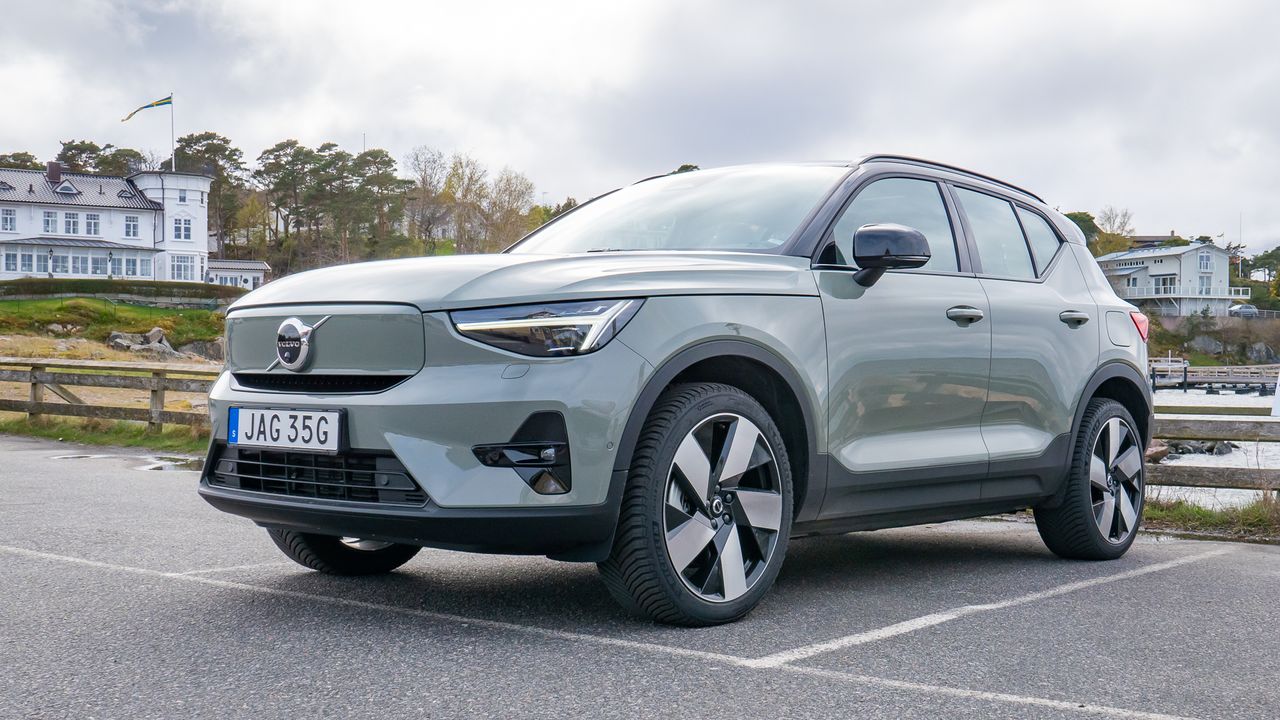
(Image credit: Future)
You would be forgiven for thinking very little has changed with the Volvo C40 and XC40 Recharge for the new 2024 model year update. Priced from £46,505 to £62,805 on the road, these cars look almost identical to their predecessors, inside and out, and a glance at the spec sheet doesn’t show much of a change either.
But say this to a Volvo engineer and you might find yourself the unfortunate subject of a new Scandinavian crime drama. There are a number of fundamental changes going on here, including an efficiency-focused shift from front- to rear-wheel-drive for the single-motor models; a new, more powerful motor; a larger battery and fast recharging.
In other words, everything you want from thebest electric car– range, power and charging speed – has been updated and improved. Imagine the enormity of the effort that would have been required in the pre-EV age to change a car from front- to rear-wheel-drive as part of a model-year facelift, and you’ll quickly realise how today’s car manufacturers are playing an entirely different game.
But does all this clever under-the-skin advancement actually make a difference? We headed to Volvo’s Swedish hometown of Gothenburg to find out.
Powertrains and performance
(Image credit: Future)

(Image credit: Future)
There’s quite a lot to digest here, but what you really need to know is that Volvo has developed its own, in-house motor, and it’s also now using a battery pack that is both larger and more energy dense than before. The result is a more efficient drivetrain with a longer range and which can be charged more quickly.
Both the XC40 and the C40 – identical, save for the latter having a sloping, coupe-style roofline – are available in single-motor, rear-wheel-drive or dual-motor, all-wheel-drive configurations. The former is called the Recharge and the latter with its two motors is called the Recharge Twin.
Sign up to the T3 newsletter for smarter living straight to your inbox
Get all the latest news, reviews, deals and buying guides on gorgeous tech, home and active products from the T3 experts
In our afternoon with the cars we saw an average closer to 3.0 m/kWh, but these figures tend to creep up gradually over longer drives.
(Image credit: Future)
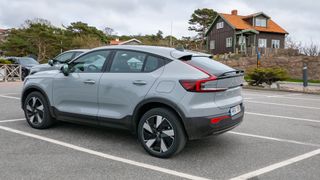
(Image credit: Future)
Torque, always plentiful with electric cars, is a claimed 420 Nm (310 lb-ft) for the rear motor of both cars and 250 Nm (184 lb-ft) for the front of the dual-motor car.
What does all this mean? Not much, if we’re being honest. If you really go looking for it you might just detect how the single-motor car is now rear-wheel-drive instead of front, but unless it’s snowing 99% of drivers aren’t going to notice.
Just as before, the C40 and XC40 are perfectly pleasant cars to drive with a good driving position, decent visibility, comfortable seats and a quiet, refined cabin. There are no driving modes to pick from, with the car instead majoring on simplicity. It’s a very easy car to drive, as almost all EVs are, and of a size that means you get used to it very quickly.
(Image credit: Future)
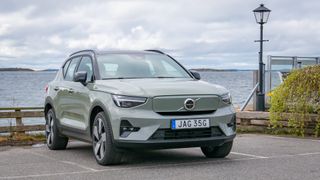
(Image credit: Future)
What buyerswillcare about is the increase to range and charging speed. The former isn’t life-changing, but extra range is always nice to have and a claimed total of 342 miles (for the C40 Recharge Twin) is not to be sniffed at. Similarly, faster charging is always welcome, especially now the car is capable of 200 kW when hooked up to a suitably powerful charger.
Acceleration times to 60 mph – not that we suspect many Volvo SUV drivers care for such things – range from 6.9 seconds for the single motor C40 and XC40, to 4.6 seconds for the dual-motor XC40 and just 4.5 seconds for the C40 Recharge Twin. This really is hilariously quick for a family SUV designed for the school run and weekends away, and while it’s amusing to floor the accelerator out of the odd junction for the mere sake of it, for 95 % of the time drivers will care more about efficiency and range than blistering acceleration. It’s a nice amount of power to have in reserve though, and makes overtaking effortless.
Top speed is 112 mph, as it is for all Volvos these days, and the four cars weigh between 2,040 kg and 2,185 kg.
Interior and tech
(Image credit: Future)

(Image credit: Future)
The interior and infotainment technology is the same as before. This means a simple, spacious cabin with interesting fabric options available for those who don’t want leather, and plastics of varying textures everywhere else.
You can ask the voice butler to play music, change the volume, adjust the cabin temperature, set a destination in the navigation system, answer random questions and even control any smart home devices you might have.
It’s a good system, but in reality you’ll use it to check the weather forecast and your kids will ask it to tell jokes, just as you all do at home.
Although it’s a system from Google,AndroidAutomotive also has support forApple CarPlay, so iPhone users can hook their handset up to that if they prefer.
(Image credit: Future)
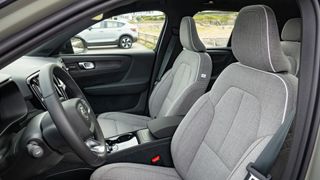
(Image credit: Future)
Verdict
With the 2024 XC40 and C40 Recharge, Volvo has nicely demonstrated the sort of upgrades we can expect from car manufacturers in the coming years. Electric drivetrain technology is evolving rapidly, and as manufacturers look to take motor development in-house, we’ll continue to see cars gain new motors, or even switch front front- to rear-wheel-drive. The sort of change that would be financially ruinous with engines is far simpler with motors.
As for the Volvos themselves, it’s a case of giving drivers more of the good stuff without upsetting buyers of the previous model. Such gains in range, performance, efficiency and charge time are all welcome, but it’s likeAppleannouncing a newiPhone; it has the same screen and case as before, but with a better camera, quicker processor and longer battery life. It won’t change your life, but it’s a nice upgrade if you can justify the cost.
(Image credit: Future)
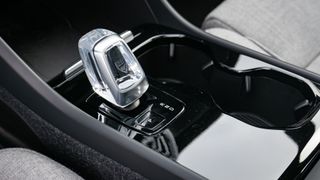
(Image credit: Future)
Also consider
There are plenty of good alternatives in this sector of the EV market. The most obvious is the XC40’s closely-relatedPolestar 2, which we gave four starsand praised for its cool Scandi design, decent range, serious performance (in dual-motor configuration) and the same Android Automotive system as the Volvo.
We also recommend the Skoda Enyaq, and while the hotEnyaq Coupe vRSmodel might not be for everyone, the regular car is a widely-praised electric family mover. It has a WLTP range of almost 340 miles and comes in slightly cheaper than the Volvo, with a starting price of £42,925.
Lastly, there’s the Ford Mustang Mach-E. As with the Skoda, you might not need the seriously fastGT model we reviewed here, but the regular car is still a great option for drivers wanting a compact electric SUV. Priced from £50, 000, it’s a bit more than the Volvo but combines great looks with up to 372 miles of range and the option to drive hands-free withFord’s new BlueCruise system.

Samsung Galaxy S25: every leak, rumour and spec we’ve heard before the launch eventThis is everything we’ve heard about the new handsets
This is everything we’ve heard about the new handsets

This case turns your iPhone or Android phone into an e-reader, but there’s a catchActually, there are a couple…
Actually, there are a couple…